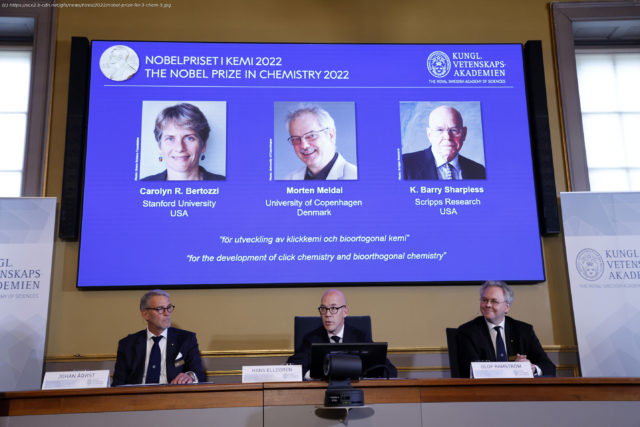“All kinds of crazy things” is how Carolyn Bertozzi, a 2022 Nobel laureate, describes her life’s work. Actually performing “chemistry in cells and in people.”
October 6, 2022
“All kinds of crazy things” is how Carolyn Bertozzi, a 2022 Nobel laureate, describes her life’s work. Actually performing “chemistry in cells and in people.”
When she started her research in 1997, the Stanford professor was aiming only to observe the evolution of certain molecules on the surface of cancer cells.
Today, thanks to her discoveries, at least two companies—including one she co-founded—are developing innovative cancer treatments.
The multitude of applications made possible by her findings are impressive: delivering treatments with extreme precision, understanding better how drugs act inside the body, visualizing certain bacteria, to name a few.
“I can’t even really enumerate them. The vast majority of those applications I would never have foreseen,” she told AFP in an interview.
The Nobel Prize committee recognized Bertozzi’s pioneering advances on Wednesday, making her only the eighth woman to win the chemistry prize, at just 55 years old.
Lego pieces
Her journey began when she found she had a passion for organic chemistry, while taking pre-medicine courses at Harvard.
The subject is notoriously—many say fiendishly—difficult, but she credits an “amazing professor,” the late David Evans, for bringing it to life—and changing the course of her life.
“I said, forget the med school thing. I’m going to be a chemist,” said Bertozzi, whose sister is a professor of applied mathematics, and father a retired professor of physics.
After completing her post-doctorate and joining the faculty at UC Berkeley, she wanted to take a closer look at glycans: complex carbohydrates, or sugars, located on the surface of cells, which “go through structural changes” when they become cancerous.






